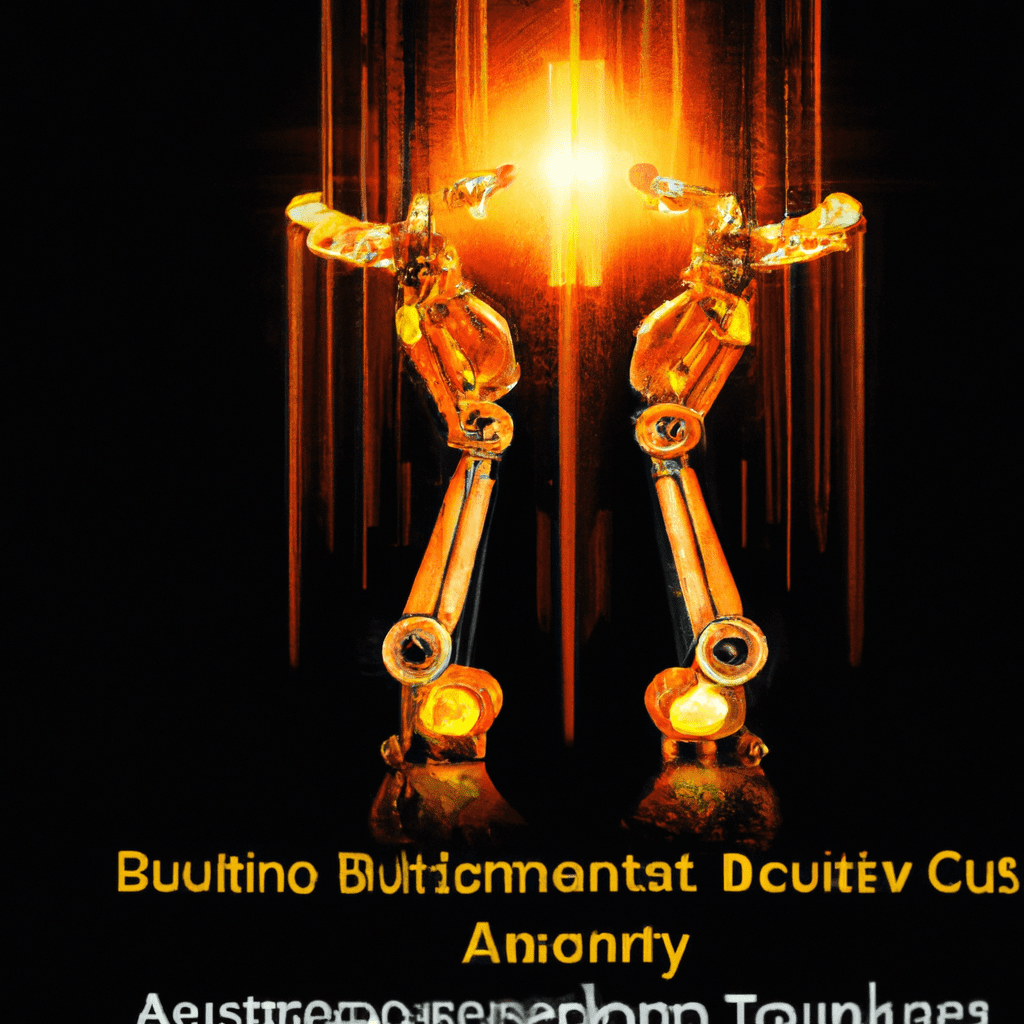Blockchain Interoperability Protocols: Seamless Interaction Between Different Blockchains
December 22, 2023 | by stockcoin.net


Blockchain interoperability protocols are set to revolutionize the way different blockchains interact with each other. In the near future, experts predict a significant shift towards these protocols, which will enable seamless communication and data transfer between different blockchain networks. As blockchain technology continues to evolve, several key trends are expected to shape the landscape of interoperability. These include the increasing importance of Bitcoin fees, the adoption of modular solutions and hybrid platforms, the use of zero-knowledge proofs, advancements in user interfaces and self-custody practices, improved security measures, the onboarding of corporate and startup builders, the flow of liquidity from Ethereum to layer-2 chains, and Ethereum’s implementation of EIP-4844 to enhance scalability. All of these developments are poised to have a profound impact on the future of blockchain technology.
▶ [Kucoin] Transaction fee 0% discount CODE◀
1. What are Blockchain Interoperability Protocols?
Blockchain interoperability protocols are technologies that enable seamless interaction and communication between different blockchain networks. These protocols aim to overcome the limitations of isolated and incompatible blockchains by establishing standardization, compatibility, and connectivity across various blockchain platforms.
1.1 Definition
Blockchain interoperability protocols can be defined as a set of rules, mechanisms, and standards that facilitate the transfer of data, assets, and information between different blockchains. These protocols establish a common language and infrastructure for different blockchain networks to communicate and interact with each other securely and efficiently.
1.2 Importance of Interoperability
Interoperability is crucial for the advancement and widespread adoption of blockchain technology. By enabling seamless communication and data exchange between different blockchain networks, interoperability protocols promote collaboration, innovation, and efficiency. It allows for the creation of complex decentralized applications (dApps) that leverage the strengths and capabilities of multiple blockchains.
Additionally, interoperability opens up new possibilities for cross-chain transactions, asset transfers, and smart contract interactions. It reduces reliance on centralized exchanges and intermediaries, making blockchain technology more accessible, inclusive, and decentralized.
1.3 Benefits of Interoperability
Blockchain interoperability offers several benefits to the blockchain ecosystem and its users:
- Enhanced Scalability: Interoperability allows for the scaling of blockchain networks by enabling the offloading of transactions and computations to other chains. This reduces congestion and enhances the overall performance of the ecosystem.
- Increased Liquidity: Interoperability facilitates the seamless transfer of assets between different blockchains, increasing liquidity and enabling new trading opportunities for users. It also minimizes the need for multiple wallet addresses and simplifies asset management.
- Risk Mitigation: Interoperability protocols enable risk diversification by allowing assets to be spread across multiple blockchains. This reduces the impact of potential vulnerabilities and failures in a single blockchain, enhancing the security and stability of the ecosystem.
- Interconnected Applications: Interoperability enables the creation of decentralized applications that can leverage functionalities, features, and data from multiple blockchains. This opens up new opportunities for innovation and collaboration in various industries.
- Ecosystem Collaboration: Interoperability promotes collaboration between different blockchain communities, developers, and projects. It encourages the sharing of resources, knowledge, and best practices, fostering a more vibrant and interconnected blockchain ecosystem.
▶ [Kucoin] Transaction fee 0% discount CODE◀
2. Current Challenges in Blockchain Interoperability
Despite the potential benefits, there are several challenges that need to be addressed for successful blockchain interoperability:
2.1 Technical Limitations
One of the main challenges in achieving blockchain interoperability is the technical limitations of existing blockchain networks. Each blockchain has its own architecture, consensus mechanism, and data structures, making it difficult to establish seamless communication and data exchange.
Interoperability protocols must account for these technical differences and develop efficient mechanisms for transferring assets, executing smart contracts, and validating transactions across different blockchains.
2.2 Lack of Standardization
Another challenge is the lack of standardization in the blockchain industry. Different blockchains often use different protocols, formats, and data representations, making it difficult to establish a common framework for interoperability.
To overcome this challenge, industry-wide standards and interoperability frameworks need to be developed and implemented. These standards should address issues such as data format compatibility, transaction verification, and smart contract execution across blockchains.
2.3 Security and Privacy Concerns
Blockchain interoperability introduces new security and privacy concerns. Transferring assets and data between different blockchains increases the risk of unauthorized access, double spending, and privacy breaches.
Interoperability protocols must incorporate robust security measures, encryption techniques, and identity verification mechanisms to ensure the integrity, confidentiality, and authenticity of the transferred assets and data.
3. Key Blockchain Interoperability Protocols
Several blockchain interoperability protocols have been developed to address the challenges mentioned above. These protocols provide different approaches and mechanisms for achieving seamless communication and data exchange between blockchains. Some of the key protocols include:
3.1 Atomic Swaps
Atomic Swaps are peer-to-peer transactions that allow for the direct exchange of cryptocurrencies between different blockchains without the need for intermediaries. This protocol ensures trustless and secure transactions, even between blockchains with different consensus mechanisms.
3.2 Sidechains and Pegged Networks
Sidechains and Pegged Networks establish a bridge between the main blockchain and secondary blockchains, allowing for the transfer of assets and data between them. Sidechains are parallel blockchains that are interoperable with the main chain, while pegged networks use specialized tokens to represent assets from one blockchain on another.
3.3 Cross-Chain Bridges
Cross-Chain Bridges enable the transfer of assets and data between different blockchains by creating a linking mechanism. These bridges establish a trustless connection between blockchains and enable seamless communication and asset transfers.
3.4 Polkadot
Polkadot is a multi-chain framework that provides a heterogeneous interoperability protocol. It allows for the transfer of any type of data or asset across different blockchains, creating a scalable and secure ecosystem for decentralized applications.
3.5 Cosmos
Cosmos is a decentralized network of independent blockchains connected through a hub. It enables the transfer of assets and data between various blockchains using the Inter-Blockchain Communication (IBC) protocol.
3.6 Wanchain
Wanchain is a cross-chain platform that enables the interoperability of different blockchain networks. It uses a combination of cryptographic techniques and secure multiparty computing to facilitate seamless asset transfers and transactions between blockchains.
3.7 Aion
Aion is a multi-tier blockchain platform that allows for the interoperability of multiple independent blockchains. It provides a bridge mechanism called Aion Virtual Machine (AVM) that enables the transfer of assets and data between different blockchains.
3.8 ICON
ICON is an interoperable blockchain network that connects various blockchain communities through its ICON Republic. It facilitates the transfer of assets, data, and even smart contract logic between different blockchains.
3.9 Ark
Ark is a blockchain platform that aims to provide easy interoperability between different blockchains. It uses its SmartBridge technology to enable the transfer of data and value across different blockchain networks.
3.10 Interledger Protocol (ILP)
The Interledger Protocol (ILP) is an open protocol suite that enables the transfer of funds and assets across different ledgers, including blockchains. It provides a standardized framework for interoperability, enabling seamless and secure transactions.
4. Use Cases for Blockchain Interoperability
Blockchain interoperability has numerous use cases across various industries. Some of the key use cases include:
4.1 Decentralized Finance (DeFi)
Interoperability allows for the seamless integration of different decentralized finance protocols, enabling users to access a wide range of financial services across multiple blockchains. It also enables cross-chain liquidity pooling, lending, and trading, enhancing the efficiency and accessibility of DeFi platforms.
4.2 Supply Chain Management
Blockchain interoperability can revolutionize supply chain management by enabling the secure and transparent exchange of data and assets between different stakeholders. It allows for the seamless tracking and transfer of goods, verifying authenticity, and reducing fraud and counterfeiting.
4.3 Identity Verification
Interoperability protocols can facilitate the secure and decentralized verification of identities across different blockchains. It allows individuals to have control over their personal data while enabling seamless identity verification for various applications such as KYC (Know Your Customer) processes.
4.4 Gaming and Virtual Assets
Blockchain interoperability enables the transfer of in-game assets and currencies across different gaming platforms, creating a unified and interoperable gaming ecosystem. It also allows for the tokenization of virtual assets, enabling ownership and transfer of digital goods.
4.5 IoT (Internet of Things) Integration
Interoperability between blockchain and IoT devices allows for the secure and efficient exchange of data and value in the IoT ecosystem. It enables autonomous devices to transact with each other, verify data integrity, and establish trust without the need for intermediaries.
5. Advancements in Blockchain Interoperability
The field of blockchain interoperability is constantly evolving, with several advancements and innovations being developed to enhance the capabilities and functionality of existing protocols. Some of the key advancements include:
5.1 Cross-Chain Smart Contracts
Cross-chain smart contracts enable the execution of smart contracts across different blockchain networks. This allows for the seamless interaction and interoperability of smart contracts, enabling the transfer of assets and data between different blockchains.
5.2 Cross-Chain Data Oracles
Cross-chain data oracles provide a mechanism for transferring real-world data from one blockchain to another. This enables the integration of external data sources into smart contracts, enhancing the functionality and use cases of blockchain applications.
5.3 Interoperable Stablecoins
Interoperable stablecoins allow for the seamless transfer of stablecoins across different blockchains. This facilitates cross-border payments, remittances, and the creation of decentralized financial services that are not limited by the boundaries of a single blockchain network.
5.4 Interoperability Standards and Frameworks
The development of interoperability standards and frameworks is crucial for the efficient and secure functioning of blockchain networks. These standards define common protocols, formats, and mechanisms that enable seamless communication and interoperability between blockchains.
5.5 Interoperability Testing and Auditing
As blockchain interoperability becomes more critical, the need for robust testing and auditing of interoperability protocols increases. Interoperability testing ensures that different blockchains can effectively communicate and exchange data, while auditing ensures the security and reliability of the interoperability mechanisms.
6. Challenges and Risks in Blockchain Interoperability
Despite the potential benefits, blockchain interoperability poses several challenges and risks that need to be addressed for widespread adoption and success. Some of the key challenges and risks include:
6.1 Security Risks
Interoperability introduces new security risks as assets and data are transferred between different blockchain networks. Malicious actors may attempt to exploit vulnerabilities in the interoperability protocols to gain unauthorized access, manipulate transactions, or steal assets.
To mitigate these risks, robust security measures, cryptography, and encryption techniques must be implemented within the interoperability protocols and the connected blockchain networks.
6.2 Double Spending Attacks
Double spending attacks are a significant risk in blockchain interoperability. As assets are transferred between different blockchains, there is a possibility for the same assets to be spent or transferred multiple times.
Interoperability protocols must implement mechanisms to prevent double spending attacks, such as consensus mechanisms, transaction verification, and asset locking mechanisms.
6.3 Governance and Consensus Challenges
Establishing governance and consensus mechanisms for interoperability protocols can be complex, as different blockchain networks may have varying governance models and consensus algorithms. Aligning the interests of different stakeholders and achieving consensus on interoperability standards and rules is a challenging task.
To address this, transparent and inclusive governance models must be developed, allowing for the participation and representation of different blockchain communities.
6.4 Scalability and Performance
Interoperability introduces additional layers of complexity, which can impact the scalability and performance of blockchain networks. Transferring assets and data between different blockchains requires additional computational resources and can introduce latency issues.
Efforts must be made to optimize the performance and scalability of interoperability protocols, including the use of layer-2 solutions, sharding, and off-chain computation techniques.
7. The Future of Blockchain Interoperability
The future of blockchain interoperability looks promising, with several key developments expected to shape the landscape:
7.1 Integration of Layer-2 Solutions
Layer-2 solutions, such as state channels and sidechains, will play a crucial role in improving the scalability and performance of blockchain interoperability. These solutions enable off-chain transactions and computation, reducing congestion on the main chains and enhancing the overall efficiency of the ecosystem.
7.2 Polkadot’s Parachains and Relay Chain
Polkadot’s parachains and relay chain architecture provide a scalable and secure framework for blockchain interoperability. The introduction of parachains allows for the parallel processing of transactions and data, while the relay chain ensures the security and interconnectivity of the parachains.
7.3 Cross-Chain Liquidity Solutions
As gas fees on the Ethereum mainnet rise, there will be a shift in liquidity from the mainnet to layer-2 chains and other interoperable solutions. Cross-chain liquidity solutions will emerge to bridge the gap between various liquidity pools, enabling efficient and seamless asset transfers across blockchains.
7.4 Interoperability with Traditional Systems
Blockchain interoperability will extend beyond the blockchain ecosystem, enabling seamless integration with traditional systems and infrastructure. This will facilitate the adoption of blockchain technology in industries such as finance, supply chain, and healthcare, where interaction with legacy systems is essential.
7.5 Mass Adoption and User Experience
Improvements in user experience and the development of intuitive interfaces will be crucial for the mass adoption of blockchain interoperability. User-friendly wallets, simplified asset management, and seamless cross-chain transactions will be key drivers for attracting new users and applications to the ecosystem.
8. Case Studies: Successful Blockchain Interoperability Projects
Several blockchain interoperability projects have demonstrated the potential and capabilities of cross-chain communication. Some notable case studies include:
8.1 Cardano and Ergo
Cardano and Ergo collaborated to enable token transfers between their respective blockchain networks. This collaboration showcased the seamless transfer of assets and data, highlighting the potential for interoperability between different blockchains.
8.2 Polkadot and Kusama
Polkadot and its experimental network, Kusama, have showcased the capabilities of the parachains and relay chain architecture. These projects demonstrate the scalability, security, and interoperability achieved through the integration of different blockchain networks.
8.3 Ethereum and Binance Smart Chain
Ethereum and Binance Smart Chain have achieved interoperability through bridge mechanisms, enabling the transfer of assets and data between the two blockchains. This collaboration has expanded the use cases and liquidity options for users within both ecosystems.
8.4 ICON and Aion
ICON and Aion collaborated to establish a cross-chain bridge, enabling developers to build applications that leverage the strengths and features of both blockchains. This interoperability partnership expands the possibilities for developers and users within the ICON and Aion ecosystems.
These case studies demonstrate the successful implementation of interoperability protocols, showcasing the potential benefits and use cases that blockchain interoperability can unlock.
9. Industry Initiatives and Collaboration in Blockchain Interoperability
The advancement of blockchain interoperability requires collaboration and initiatives from various stakeholders in the blockchain ecosystem. Some key industry initiatives include:
9.1 Interoperability Working Groups
Interoperability working groups bring together blockchain developers, researchers, and industry experts to collaborate on developing standards, best practices, and interoperability frameworks. These groups aim to establish common protocols and guidelines for achieving seamless communication between different blockchains.
9.2 Cross-Chain Development Frameworks
Developers are actively working on cross-chain development frameworks that simplify the process of building interoperable applications. These frameworks provide tools, libraries, and documentation that enable developers to integrate multiple blockchains into their applications seamlessly.
9.3 Collaborative Research and Development
Collaborative research and development efforts among blockchain projects, academic institutions, and industry players are accelerating the advancement of blockchain interoperability. These collaborations involve sharing knowledge, resources, and expertise to address technical challenges and spur innovation in the field.
10. Conclusion
Blockchain interoperability protocols are essential for creating a connected, scalable, and vibrant blockchain ecosystem. Through seamless communication and data exchange between different blockchains, interoperability enhances collaboration, innovation, and efficiency. It enables the creation of complex decentralized applications, facilitates cross-chain transactions, and expands the use cases of blockchain technology.
Despite the challenges and risks, the future of blockchain interoperability looks promising. Advancements in cross-chain smart contracts, data oracles, and interoperable stablecoins will enhance the capabilities and functionality of blockchain interoperability protocols. Scalability, security, and user experience will be key focus areas for further development.
As the blockchain industry continues to evolve, industry initiatives, collaboration, and standardization will play crucial roles in shaping the future of blockchain interoperability. By working together, the blockchain community can unlock the full potential of this technology, enabling widespread adoption and integration with traditional systems.
▶ [Kucoin] Transaction fee 0% discount CODE◀

RELATED POSTS
View all






